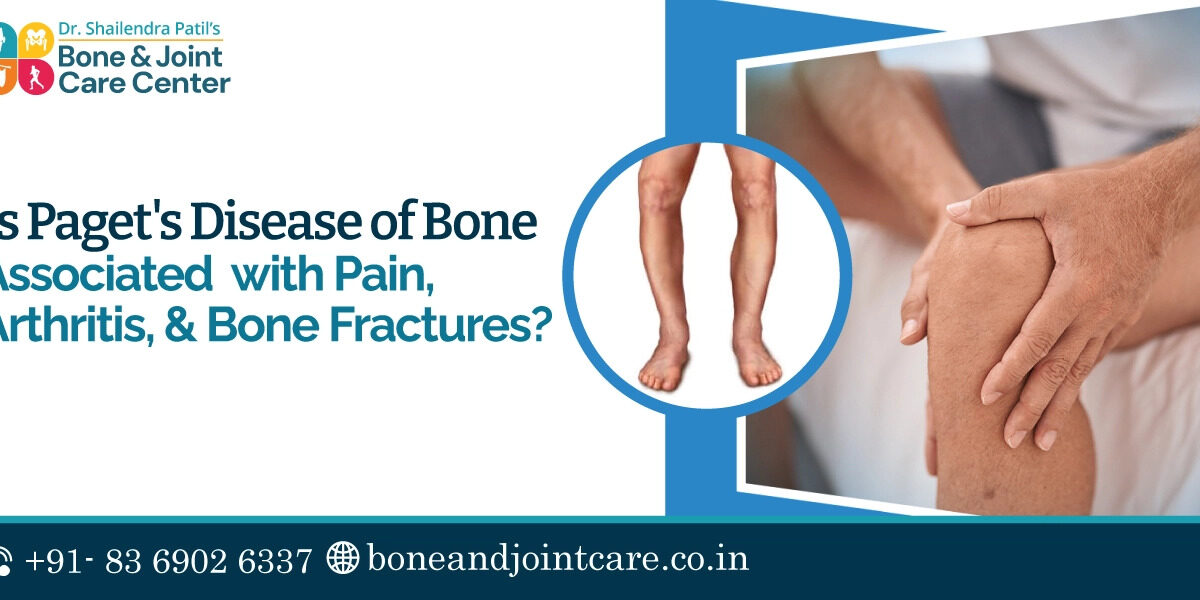Paget’s disease of bone is a chronic disease of the skeleton. In healthy bone, a process called remodeling removes old pieces of bone and replaces them with new, fresh bone. Paget’s disease causes this process to shift out of balance, resulting in new bone that is abnormally shaped, weak, and brittle. Paget’s disease most often affects older people, occurring in approximately 2 to 3% of the population over the age of 55 which needs bone doctor in Thane consultation.
Many patients with Paget’s disease have no symptoms at all and are unaware they have the disease until X-rays are taken for some other reason. When bone pain and other symptoms are present, they can be related to the disease itself or to complications that arise from the disease — such as arthritis, bone deformity, and fractures.
In most cases, treatment for Paget’s disease involves taking medications to help slow or stop the progress of the disease. For patients who have complications, surgery may be needed to realign deformed bones or to help fractures heal.
Sign & symptoms:
Many people with Paget’s disease do not have any symptoms at all. The disease is often first discovered when X-rays are taken for another reason or when routine blood work indicates an elevated blood serum alkaline phosphatase level. Paget disease mimics the signs of other orthopaedic conditions. Some of the symptoms that are to be noticed are:
- Pain in the body
- Bone deformity
- Arthritis
- Risk for bone fracture
- In very rare cases it may lead to bone cancer.
Causes:
Paget disease is mostly idiopathic. Experts are still not sure about the causes of this disease. The best way is to diagnose the disease as soon as possible so that it can be treated. Diagnosis can be done by :
- X-Ray
- Bone scanning
- Bone biopsy
- Blood tests
After going through all these examinations, we can get sure about the disease and start treating over it.
Treatment:
There is no cure for Paget’s disease and no way to reverse its effects on bone. Treatment focuses on relieving symptoms and preventing future complications.
Nonsurgical Treatment
If you do not have pain or other symptoms, no treatment is required. Your doctor may recommend simply monitoring your condition with regular office visits and periodic X-rays to watch for changes in the affected bone and to ensure that complications do not develop.
If symptoms do occur, your doctor may recommend one or more nonsurgical treatments.
- Nonsteroidal anti-inflammatory drugs (NSAIDs).
- Assistive devices.
If your pelvis or leg is affected by the disease, using a cane can help relieve pain by decreasing the forces going through the bone.
- Bisphosphonate medications.
When bone pain is more significant, medications called bisphosphonates are the treatment of choice. These drugs block osteoclasts and can be very effective in treating Paget’s disease.
Surgical Treatment
In some cases, surgery may be needed to treat the complications of Paget’s disease, including:
- Bone fractures
- Malalignment or deformity of bone
- Severe arthritis
The surgical procedures used to treat fractures, malalignment, or arthritis in patients with Paget’s disease are similar to those used to treat similar conditions in people with normal bone.
These procedures may include:
- Internal fixation.
This procedure can be used to treat fractures in bone affected by the disease.
- Osteotomy.
An osteotomy can help relieve pain and restore alignment to weight-bearing joints that are affected by Paget’s disease, especially the knee and hip
- Total joint Replacement.
In this procedure, parts of an arthritic or damaged joint are removed and replaced with a metal, plastic or ceramic device called a prosthesis
Because Paget’s disease increases the blood supply to bones, your doctor may recommend taking bisphosphonates for a period of time before surgery to help reduce potential blood loss.
Bones affected by Paget’s disease may take longer to heal than normal bones. A longer period of rehabilitation may also be necessary.







